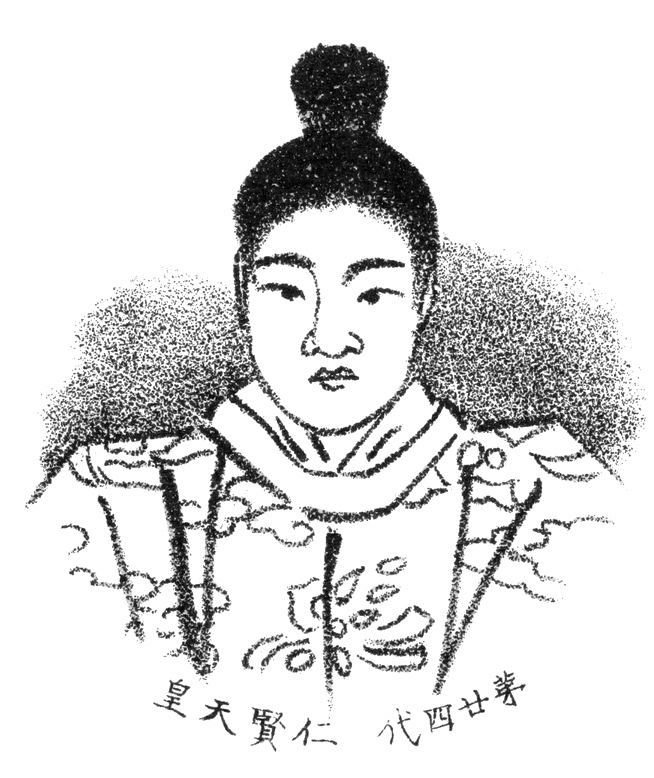Predecessor Kenzo Children Emperor Buretsu Successor Buretsu Grandparents Emperor Richu | Name Emperor Ninken Parents Ichinobe-no Oshiwa | |
 | ||
Reign 488 – 498 (traditional) Died August 8, 498 AD, Tenri, Nara Prefecture, Japan Similar People Emperor Jimmu, Kakuei Tanaka, Akihito, Hirohito, Princess Shikishi | ||
Great-grandparents Emperor Nintoku | ||
Emperor Ninken (仁賢天皇, Ninken-tennō), also known as Ninken-okimi, was the 24th emperor of Japan, according to the traditional order of succession. No firm dates can be assigned to this emperor's life or reign, but he is conventionally considered to have reigned from 488 to 498.
Contents
Legendary narrative
Ninken is considered to have ruled the country during the late-5th century, but there is a paucity of information about him. There is insufficient material available for further verification and study.
In his youth, he was known as Prince Oke (億計). Along with his younger brother, Prince Woke, Oke was raised to greater prominence when Emperor Seinei died without an heir. The two young princes were said to be grandsons of Emperor Richū. Each of these brothers would ascend the throne as adopted heirs of Seinei, although it is unclear whether they had been "found" in Seinei's lifetime or only after that.
Oke's younger brother, who would become posthumously known as Emperor Kenzō, ascended before his elder brother. This unconventional sequence was in accordance with an agreement made by the two brothers.
Ninken's reign
When Emperor Kenzo died without heirs, Prince Oke succeeded him as Emperor Ninken.
Ninken's contemporary title would not have been tennō, as most historians believe this title was not introduced until the reigns of Emperor Tenmu and Empress Jitō. Rather, it was presumably Sumeramikoto or Amenoshita Shiroshimesu Ōkimi (治天下大王), meaning "the great king who rules all under heaven." Alternatively, Ninken might have been referred to as (ヤマト大王/大君) or the "Great King of Yamato".
Ninken married to Emperor Yūryaku's daughter Kasuga no Ōiratsume no Himemiko, a second cousin of him. Their daughter Tashiraka was later married to Keitai, successor or possibly usurper after her brother, and became mother of Kinmei, a future monarch and lineal ancestor of all future monarchs of Japan. There apparently was also another daughter, princess Tachibana, who in turn is recorded to have become a wife of Senka and mother of princess Iwahime, who herself became a consort of Kimmei and bore Bidatsu, a future monarch and lineal ancestor of current monarchs of Japan.
Ninken was succeeded by his son, who would accede as Emperor Buretsu.
The actual site of Ninken's grave is not known. This emperor is traditionally venerated at a memorial Shinto shrine (misasagi) at Osaka.
The Imperial Household Agency designates this location as Ninken's mausoleum. It is formally named Hanyū no Sakamoto no misasagi.
